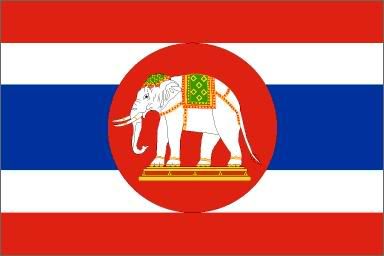VESAK HOLIDAY
Today is the holiest day in the Buddhist calendar, Visakah Bucha also known as Vesak Day. Dated to coincide with the first full moon of the fourth month in the Chinese lunar calendar, Vesak marks the birth, enlightenment (Nirvana), and passing (Parinirvana) of Gautama Buddha. Because of the leap year in the lunar calendar, in 2007 the day is a public holiday in some countries on May 1st or 2nd (including Sri Lanka, Malaysia, Cambodia, Nepal, Laos, India, and Bangladesh), still others on May 24th (Hong Kong, South Korea, Macau, and Taiwan), and the remainder on either May 31st or June 1st (Singapore, Thailand, Bhutan, and Indonedia).
Devout Buddhists and followers observe Visakah Bucha by assembling in temples before dawn for the ceremonial raising of the Buddhist flag and singing of hymns in praise of the holy triple gem: the Buddha, the Dharma (his teachings), and the Sangha (his disciples). Devotees bring simple offerings of flowers, candles, and joss-sticks to lay at the feet of their teacher. These symbolic offerings are to remind followers that just as the beautiful flowers would wither away after a short while and the candles and incense would soon burn out, so too is life subject to decay and destruction.
Devotees are also instructed to make a special effort to refrain from killing of any kind. They are encouraged to partake of vegetarian food for the day. Birds, insects and animals are released by the thousands in what is known as a “symbolic act of liberation;” of giving freedom to those who are in captivity, imprisoned, or tortured against their will. Some devout Buddhists will wear a simple white dress and spend the entire day in temples with renewed determination to observe the Eight Precepts. This is called ‘Rub Sil’ in Thailand.
The Eight Precepts are:
1. Not to kill
2. Not to steal
3. Not to engage in improper sexual activity
4. Not to indulge in wrong speech
5. Not to take intoxicating drinks and drugs
6. To abstain from taking food at unreasonable times
7. To refrain from sensual pleasures such as dancing, singing and self-adornment
8. To refrain from using high and luxurious seats in order to practice humility
Celebrating Vesak also means making special efforts to bring happiness to the unfortunate like the aged, the handicapped and the sick. To this day, Buddhists will distribute gifts in cash and kind to various charitable homes throughout the country. Vesak is also a time for great joy and happiness, expressed not by pandering to one’s appetites but by concentrating on useful activities such as decorating and illuminating temples, painting and creating exquisite scenes from the life of the Buddha for public dissemination. Devout Buddhists also vie with one another to provide refreshments and vegetarian food to devotees who visit the temple to pay homage to the Blessed One.
Tradition ascribes to the Buddha himself instruction on how to pay him homage. Just before he died, he saw his faithful attendant Ananda, weeping. The Buddha advised him not to weep, but to understand the universal law that all compounded things (including even his own body) must disintegrate. He advised everyone not to cry over the disintegration of the physical body but to regard his teachings (The Dhamma) as their teacher from then on, because only the Dhamma truth is eternal and not subject to the law of change. He also stressed that the way to pay homage to him was not merely by offering flowers, incense, and lights, but by truly and sincerely striving to follow his teachings. This is how devotees are expected to celebrate Vesak: to use the opportunity to reiterate their determination to lead noble lives, to develop their minds, to practise loving-kindness and to bring peace and harmony to humanity.During the Vesak celebration an image of the new-born Buddha, in a gesture of pointing to the Truth, is usually displayed in the shrine room of temples. There is actually a party feel to the entire occasion. Houses and streets are cleaned and decorated with Buddhist flags and flowers. In villages, Buddhists gather around statues of the Buddha when it is dark. They walk around the statue with candles until all is covered in light. Light is used by Buddhists to recall that the Buddha showed people how to become enlightened.
The tree the Buddha attained Englightment under, in Bodh Gaya, India, is called the bodhit tree. It is greatly revered in Buddhism. A bodhi tree can usually be found in the grounds of most temples or monasteries and is decorated with flags, lamps, and lanterns for the Vesak celebration. It is customary to paint an image of the Buddha on bodhi tree leaves to give as gifts on Visakha Bucha.
My wife had planned to get up early this morning to make merit and attend ceremonies at Wat Chalong but the monsoonal rains put an end to that idea. Since I have a holiday from work we'll go into Patong later if the rain lets up.

ไม่มีความคิดเห็น:
แสดงความคิดเห็น